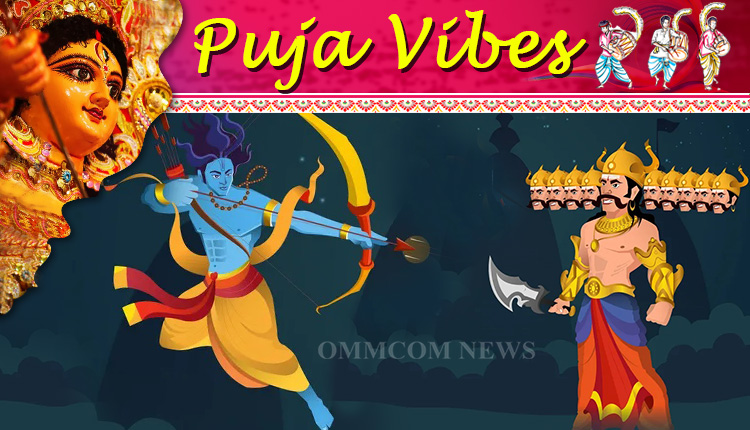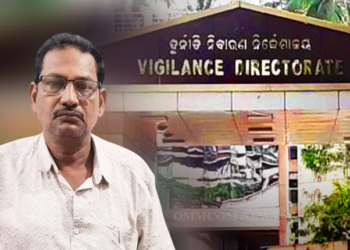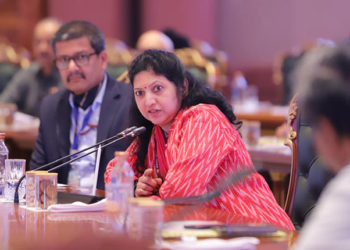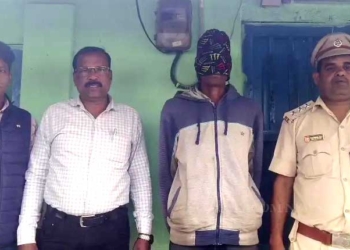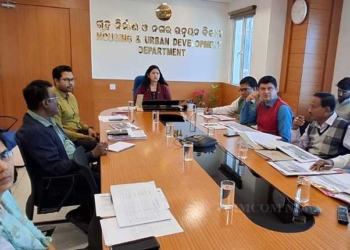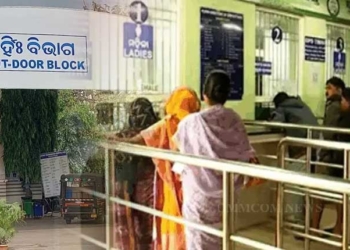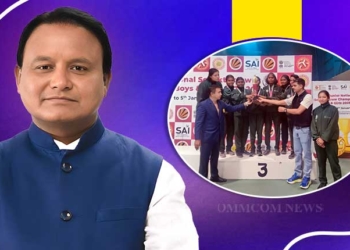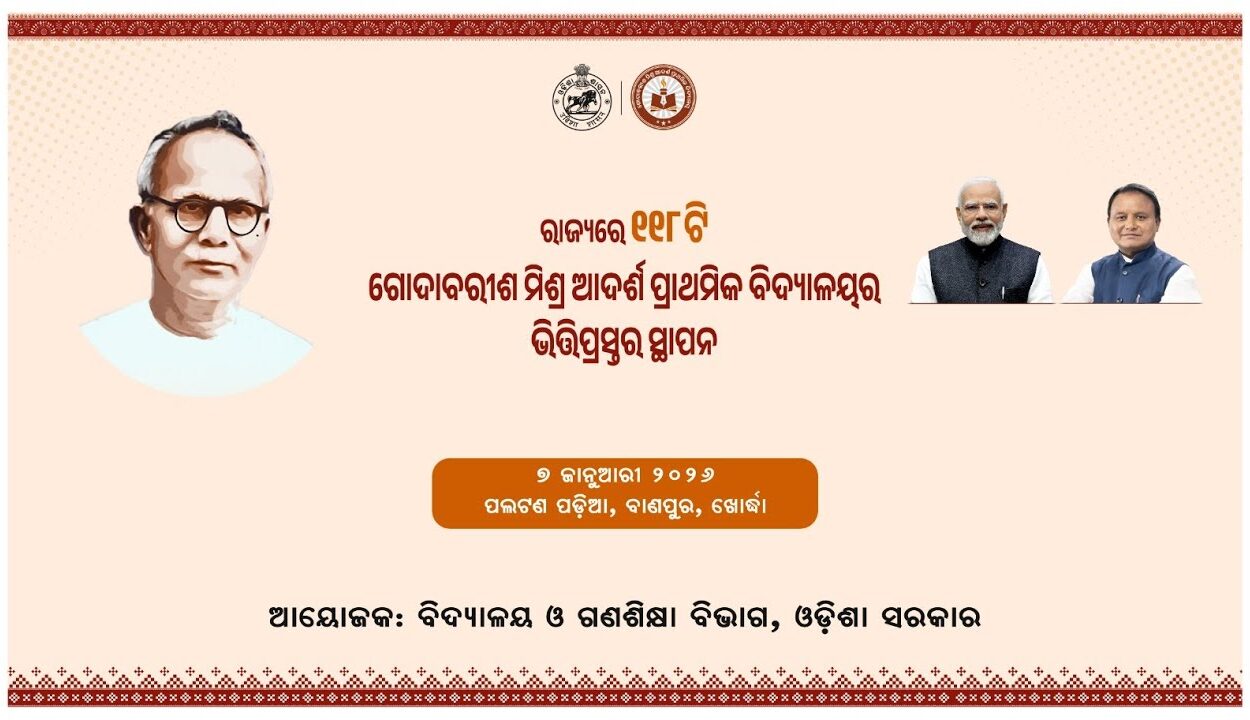Bhubaneswar: The term Vijayadashami originates from the combination of two words – Vijaya (denoting victory in Sanskrit) and Dashami (meaning the 10th day of the lunar calendar). It signifies the day when Goddess Durga defeated the demon Mahishasura. It is also the last day of Durga Puja, which marks the annual visit of Goddess Durga to her father’s place with her children. On Dashami, she returns home to her husband, Lord Shiva.
This day also marks a shift in season. After summer and monsoons, it marks the onset of winter. Farmers also harvest the Kharif crop after Dussehra.
In Bhubaneswar, people celebrate Dussehra by immersing the idol of Goddess Durga and her children in the evening, while giant effigies of Ravana, locally known as Ravan Podi, are burnt at various places.
Vijaya Dashami
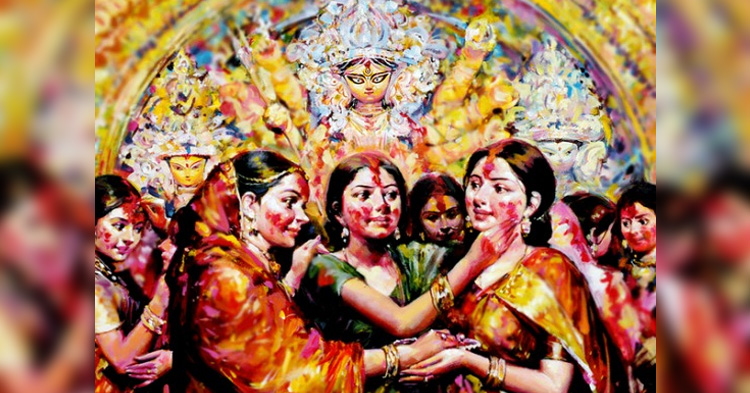
There is hardly any person who has not heard about Durga Puja, which is mainly celebrated in the eastern part of India with great pomp and fervor during the month of Ashwin (Hindu calendar). In Kolkata, Dussehra is known as Vijaya Dashami. It marks the final day of Durga Puja when the idols of Goddess Durga and her four children are taken to the river for immersion. Of the many rituals observed on this day, the most popular is the one where married women offer vermillion and sweets to the goddess, and then smear each other with the vermillion. In Kolkata, the deities are taken out in a huge procession and carried to the Hooghly (Ganga) river. One of the best ways to watch the immersion is by hiring boats. This practice is followed in other places where Durga Puja is celebrated.
Bastar Dusshera
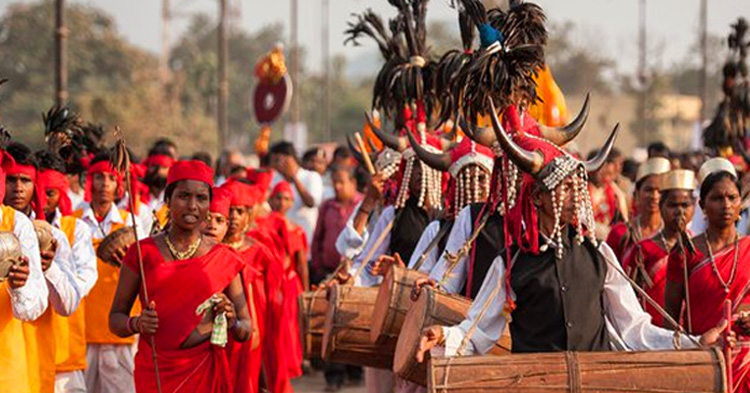
Although called Bastar Dussehra, it has got nothing to do with the story of Lord Rama’s win over Ravana. The festival and fair lasts over 45 days – one of the longest in the world. It is mainly held in honour of Goddess Danteshwari, the guardian deity of the tribal belt of Bastar in Chhattisgarh. Local history says the festival began in the 15th century after the Kakatiya king Purushottam Deo returned from a pilgrimage to Puri in Odisha. There are many rituals associated with this festival, including chariot processions, the visit to Jagdalpur by various deities of Bastar, the tribal chieftains’ conference, and the thanksgiving ceremonies.
Dussehra Mela
Kota in Rajasthan is known for its Dussehra Mela. On the day of Dussehra, religious functions are held in the royal palace since morning. Then the king and other members of the royal family travel in a colourful procession to the fairground. Towering effigies of Ravana, Kumbhakaran, and Meghnad are kept ready and the king inaugurates the celebration by igniting the effigies. The firecrackers stuffed inside the effigies burst and light up the sky. A huge fair is held during this time, including a cattle fair.
Devaragattu Dasara

While the entire country celebrates the victory of good over evil, things get a little aggressive in the Kurnool district of Andhra Pradesh. Also known as the Banni Festival, Devaragattu is certainly a unique Dussehra celebration from anywhere in India. Every year on Dasara, the Devaragattu Temple in Kurnool district of Andhra Pradesh witnesses controlled violence at an unimaginable scale. Hundreds of villagers from Karnataka and Andhra Pradesh congregate in the Kurnool temple complex with sticks, which they use to injure their opponents on the head. However, medical teams and police are deployed at every step to take care of the injured.
Kullu Dussehra
You can see all the leading deities of Himachal Pradesh assemble in Kullu town during Dussehra to pay their respect to Lord Raghunath. The festival begins on the day of Dussehra and continues for seven days. The deities arrive in their own palanquins and camp in the Dhalpur Maidan. Some come from remote corners, the entourage consisting of the palanquin bearers, the musicians, priests, and other attendants making the journey over several days and on foot.
The interesting rituals that take place during this time are the Rathayatra of Lord Raghunath, the procession of the Gods around town, and the meetings that take place between the various deities conducted by the officiating priests.
Mysore Dasara
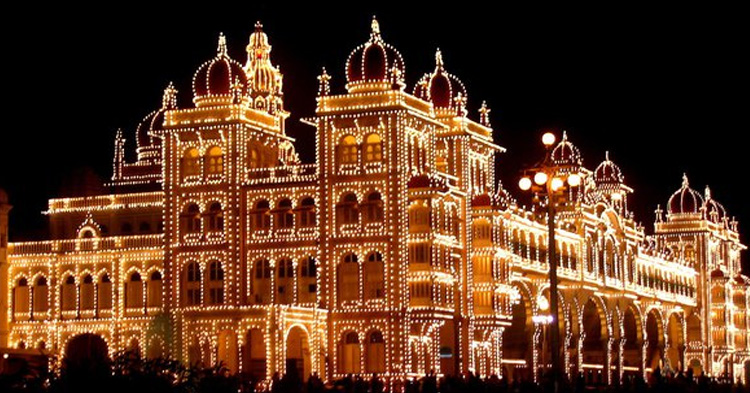
Known as Dasara, this is Mysore’s most popular festival and it started as a cultural celebration about 600 years ago, initiated by the Vijayanagara emperors. They celebrated the victory of the warrior Goddess Chamundeshwari (an avatar of Durga) over the demon Mahishasur, by hosting military parades, athletic competitions, performing arts, and charity events. Dasara, as the locals say, is the most important festival celebrated in Mysore which is marked by a 10-day extravaganza culminating in Vijayadashmi or Dasara.
After the Goddess is worshipped in the palace by the royal family, she is taken out in a grand procession. The Goddess is placed in a golden howdah atop a decorated elephant. The procession, known as jumbo savari, consists of grand tableaus, musical and dance performances by various artists, the enactment of local folklore, decorated elephants, giant puppets, horses, and more. The procession starts from the royal palace and concludes at the Banni Mantap. A torch-light parade is held here in the evening and a huge fair is held at the Exhibition Ground opposite the palace.
Golu Celebrations
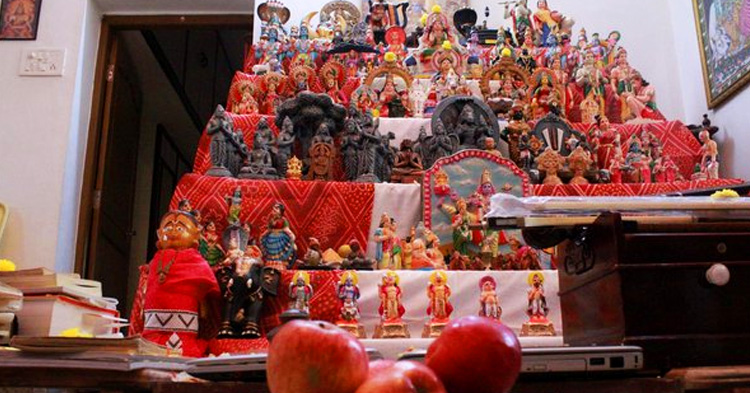
Golu in Tamil Nadu is celebrated to remember the victory of Goddess Parashakti over the evil King Mahishasura. The festival is a representation of the victory of good over evil. The 10th day of Navaratri is celebrated to remember the victory of Lord Rama over Ravana. Evenings are the most pleasant part of the day during the Golu festival. Devotees dress up for the occasion and visit each other’s Golu decorations at home as well as in temples. They sing songs and bhajans and pray to the goddess. During the Vijayadashami day, parents send their kids for the first day of school. It is considered an auspicious day to start any new learning activity.
Ashoka Vijaya Dashami
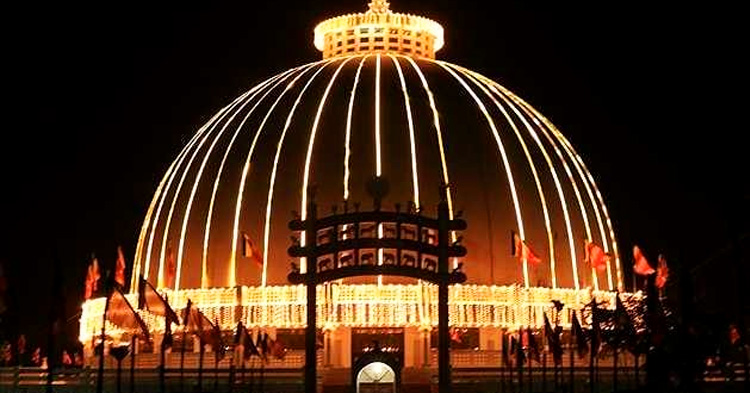
Buddhists in Maharashtra celebrate this day as Ashoka Vijaya Dashami because it is believed to be the day when Mauryan Emperor Asoka converted to Buddhism. This grand festival and congregation is held at Nagpur and millions gather to remember the Dhamma-Chakra Pravartan done by Dr Ambedkar to convert to Buddhism. Even though the conversion took place on October 14, Dhammachakra Pravartan Din, which marks the event, is celebrated on Ashoka Vijayadashami (Dussehra) every year.




